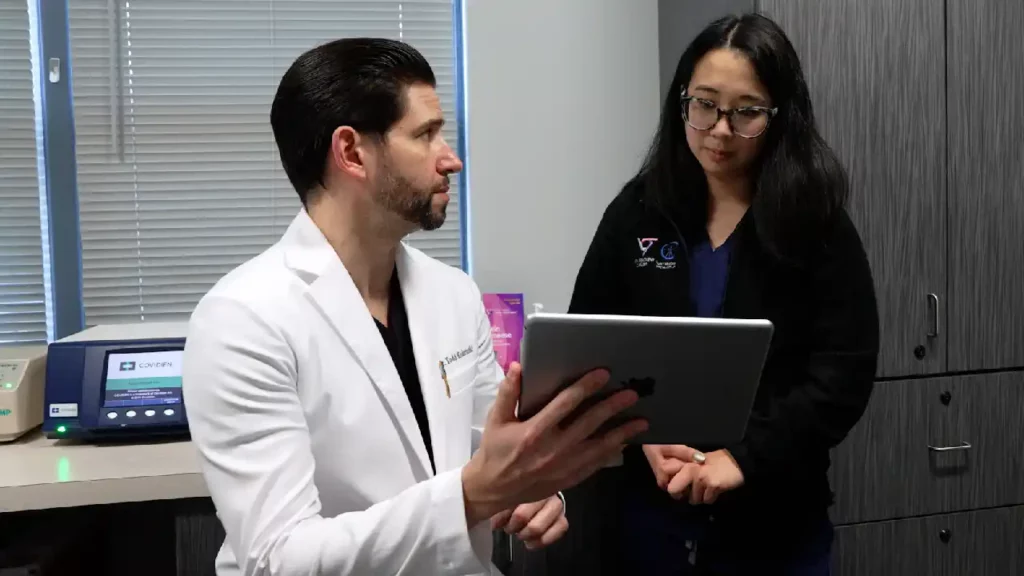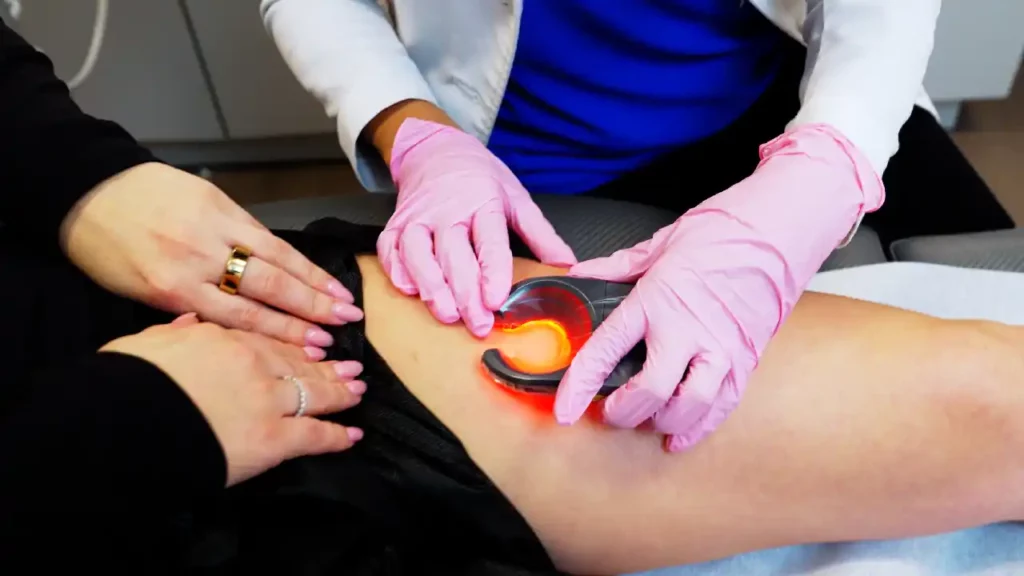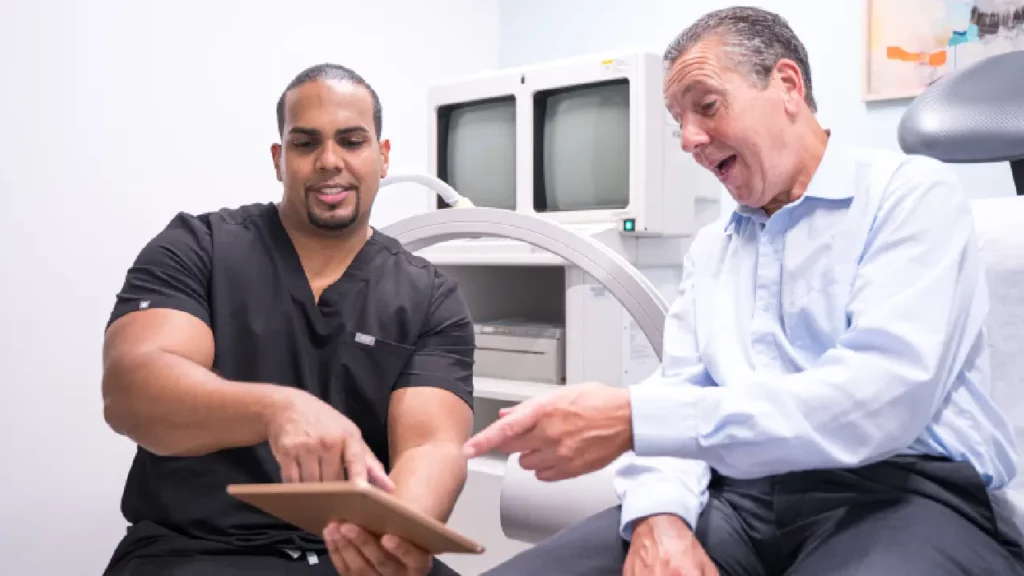Compression Stockings: Your Guide to Choosing the Right Pair
The Importance of Vein Health
Your veins play a pivotal role in circulating blood throughout your body. They are responsible for carrying deoxygenated blood back to the heart, where it is then pumped to the lungs for oxygenation. Problems in your venous system can lead to various health issues, such as chronic venous insufficiency, varicose veins, and deep vein thrombosis (DVT).
Healthy veins have one-way valves that allow blood to flow toward the heart but not backward due to gravity. Chronic venous insufficiency occurs when the vein valves malfunction or collapse, causing blood to flow backward due to gravity and accumulate in the leg veins. The continued accumulation of blood in leg veins leads to vascular dilation and numerous vein problems, ranging from spider veins and varicose veins to leg swelling, leg cramps, leg ulcers, and blood clots in the leg veins, also known as deep vein thrombosis.
Varicose veins occur when the veins become twisted and enlarged, causing pain, swelling, and discomfort. DVT, on the other hand, is a more severe condition where blood clots form in the deep veins, posing a risk of clot migration to vital organs, such as the lungs. If blood clots travel to the lungs, you may suffer a potentially fatal complication known as pulmonary embolism. The risk of deep vein thrombosis is fairly low, but it’s still important to maintain optimal vascular health and prevent chronic venous insufficiency from progressing.
How Compression Stockings Work
Compression stockings work by applying graduated pressure to your legs, with the greatest pressure at the ankle and decreasing as it moves up the leg. This helps improve blood flow by assisting the veins in pushing blood back towards the heart. Here’s how they work:
- Enhanced Circulation: The graduated compression encourages blood to flow more efficiently from the lower extremities towards the heart, reducing the risk of blood pooling in the veins.
- Reduced Swelling: Compression stockings help prevent or reduce edema (swelling) by promoting the drainage of excess fluid from the legs.
- Preventing Blood Clots: By promoting healthy blood flow, compression stockings reduce the risk of blood clot formation, particularly in individuals who are sedentary for long periods.
- Supporting Vein Valves: These stockings support the valves within your veins, preventing them from collapsing and allowing blood to flow backward.
Types of Compression Stockings
Compression stockings come in various types, each catering to specific needs and preferences. Understanding the different types will help you choose the right pair for your condition.
- Graduated Compression Stockings: These are the most common type and provide the highest pressure at the ankle, gradually decreasing towards the top. They are suitable for various venous issues and are often recommended for everyday use.
- Anti-Embolism Stockings: These stockings are designed for individuals at risk of developing blood clots during periods of immobility, such as hospital patients recovering from surgery. They provide consistent pressure to reduce clot formation.
- Compression Pantyhose: These stockings cover both the legs and the waist, providing support to the entire lower body. They are often used for more severe venous conditions.
- Compression Knee-Highs: These stockings cover the lower leg and reach just below the knee. They are a popular choice for everyday wear, as they are easy to put on and take off.
- Compression Thigh-Highs: These stockings extend up to the thigh, providing support to a larger area of the leg. They are ideal for individuals with more extensive vein issues.
Choosing the Right Compression Level
One of the critical factors in selecting the right compression stockings is determining the appropriate compression level. Compression levels are measured in millimeters of mercury (mmHg). The choice of compression level depends on your specific condition:
- Mild Compression (15-20 mmHg): This level is suitable for preventing mild swelling and discomfort during long periods of sitting or standing. It’s often recommended for individuals on long flights or those at risk of developing venous issues.
- Moderate Compression (20-30 mmHg): Ideal for managing varicose veins, moderate swelling, and providing relief from aching and fatigue in the legs. It’s commonly used for both prevention and the treatment of early symptoms of vein disease.
- Firm Compression (30-40 mmHg): Reserved for more severe venous conditions, firm compression stockings help manage significant swelling, varicose veins, and chronic venous insufficiency. It’s more suitable for treatment rather than prevention.
- Extra Firm Compression (40-50 mmHg and higher): These are specialized stockings for severe venous diseases, such as lymphedema and advanced venous insufficiency. They require a prescription and should be used under medical supervision.
Getting the Right Fit
Choosing the correct size is crucial to ensure that your compression stockings work effectively and provide maximum benefits. Here are steps to help you find the right fit:
- Measure Your Leg: Use a measuring tape to determine the circumference of your ankle, calf, and thigh. Measure the length from your heel to just below your knee or thigh, depending on the type of stockings you’re buying.
- Consult a Sizing Chart: Compression stockings typically come with sizing charts provided by the manufacturer. Match your measurements to the chart to find the appropriate size.
- Consider Your Leg Shape: Different brands may have variations in sizing. If your leg shape is not entirely typical, consider trying different brands or styles to find the best fit.
- Consult Vein Doctors: If you’re uncertain about sizing or have unique leg dimensions, consult a vein doctor for help in finding the right pair of custom compression stockings.
Putting On Compression Stockings
Putting on compression stockings can be challenging if you’re new to them. However, with practice, it becomes easier. Here’s a step-by-step guide to help you put them on correctly:
- Ensure your skin is clean and dry, free from lotion or oil that can make the stockings slip.
- Start by turning the stocking inside out, leaving only the toe area intact.
- Gently insert your foot into the stocking until your toes are covered.
- Slowly unroll the stocking up your leg, smoothing out any wrinkles or creases as you go.
- Ensure the stocking is evenly distributed, with no excess fabric gathering in one spot.
- Follow the same steps for the other leg if you’re wearing knee-high or thigh-high stockings.
- If you find any areas that feel too tight, adjust the stocking to ensure a comfortable fit.
- Ensure the compression is evenly distributed from your ankle to the top of the stocking.
- For optimal results, wear your compression stockings daily as recommended.
Caring for Your Compression Stockings
Proper care and maintenance of your compression stockings are essential to prolong their lifespan and effectiveness. Here are some tips for keeping them in excellent condition:
- Hand wash your compression stockings using a mild detergent and lukewarm water.
- Avoid using bleach or fabric softeners.
- After washing, rinse them thoroughly to remove all soap residue.
- Lay your stockings flat on a towel to air dry.
- Avoid wringing them out, as this can damage the fibers.
- Never use a dryer, iron, or any direct heat source, as it can cause them to lose elasticity.
- If you have more than one pair of compression stockings, rotate them.
- Replace compression stockings according to their lifespan, typically every three to six months.
Who Should Wear Compression Stockings?
Compression stockings can benefit a wide range of individuals, including those with specific medical conditions and those looking to prevent vein problems. Here are some groups of people who may benefit from wearing compression stockings:
- Pregnant Women: Pregnancy often leads to increased pressure on the legs, which can cause swelling and discomfort. It can also increase the risk of blood pooling in the leg veins, leading to vein disease and varicose veins. Compression stockings can alleviate swelling and other symptoms and improve overall vascular health.
- Frequent Travelers: Long-haul flights or extended periods of sitting can increase the risk of blood clots. Compression stockings can help prevent deep vein thrombosis (DVT).
- Athletes: Athletes may use compression stockings to improve performance and reduce muscle soreness during and after physical activities.
- Individuals with Varicose Veins: Compression stockings are a standard treatment for managing varicose veins by reducing symptoms and preventing their progression. While they can’t treat or remove varicose veins, they can prevent the condition from worsening.
- Post-Surgery or Injury: Vein doctors often recommend compression stockings post-surgery or after minimally invasive vein treatments to improve blood flow and reduce swelling.
- Those with Chronic Venous Insufficiency: Individuals with chronic venous insufficiency, where the leg veins cannot pump blood effectively, can benefit from compression stockings.
Consult Our Vein Doctors
While compression stockings offer various benefits, it’s essential to consult our board-certified vein doctors before starting to wear them. Our vein doctors can assess your condition, recommend the appropriate compression level, and provide guidance on the right type and size of stockings for your needs. In some cases, a prescription may be necessary, especially if you require higher compression levels or have specific medical conditions. Your vein doctor will also offer guidance on the duration of wear and any necessary follow-ups to monitor your progress.
The Vein Treatment Clinic has offices across the United States, including New York, New Jersey, California, and Maryland. Please schedule an appointment at your nearest vein treatment clinic to explore your options for compression stockings.









